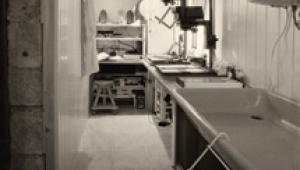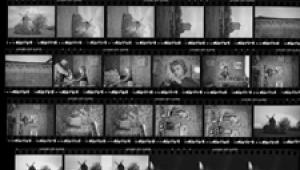Even if we are now in digital age, there are still photographers who are using dark rooms in developing their photos but I think its more creative and more authentic. - YOR Health
The Darkroom
Coping With Change; Two Dozen Tips On Dealing With Diminishing Film & Darkroom Material
"Sorry, that's been discontinued." The salesclerk shakes
his head. And that, you realize with sinking heart, is that: no more of your
favorite film, paper, developer, whatever. These are trying times. What do you
do?
First of all, make sure he's telling the truth. Far too often, "That's
been discontinued" actually means "We're too lazy/inefficient/indifferent
to continue to carry it." But let's assume that you've checked
all the manufacturers' and distributors' websites and it is true.
We have all seen too many examples to deny that it can happen.
 |
|
|
Consider the most radical possibility first: a complete change of direction.
Maybe you've been shooting 35mm. Is it time to switch to medium or large
format? Or even (perish the thought) digital? If you're going from Nikon
to Alpa, the changes in cameras alone will dwarf the change from Kodak paper
to Ilford, or Agfa film to Kodak. You'll have to re-learn a lot of photography,
but that's OK, as long as you enjoy it.
Let's assume you don't want to do that either: you want to carry
on as close to your previous approach as possible. So what are your strategies
for recovering from this body blow to your film photography? Here are 24 ideas:
1. Don't panic. There are still plenty of silver-halide
materials available, with many of the old, familiar names (and some unfamiliar
ones, too) printed in large, friendly letters on the box. As long as people
go on buying it, they'll go on making it.
2. Stockpile. Often, discontinuations are announced far enough
in advance that the practical limit for most photographers is how much they
can afford or store, not how much is available. Buy as much as you can of a
discontinued film or paper: it will keep for years in a freezer. Use it for
your most important work; use the other ideas listed to manage the transition.
You might be surprised to find that well before your stocks have exhausted,
you have found something you actually prefer. The stockpile just gives you the
peace of mind that you need to test other materials.
3. Don't hurry. Unless you're a professional who
has work riding on it, you can afford to take your time--especially if
you've got a good stockpile. More haste: less speed.
4. See if anyone else makes it. This is particularly important
with developers. Most developing agents are now out of patent protection, and
few are hard to synthesize. It's a bit like "generics" in
drugs. Often, you'll find an identical formula from a less-known manufacturer.
At the extreme, you can compound your own developers. There are plenty of published
formulas, and making up developers (or fixers, or toners) isn't difficult.
5. Look for the closest substitute. The most obvious example
is in films, where you have "new technology" (monosize crystals)
and "old technology" (cubic crystals). If you're sure you're
happiest with "old technology" films, with their greater exposure
latitude, wider developer repertoire, and greater tolerance for out-of-spec
processing, don't switch to "new technology." But if you like
the finer grain of "new technology," by all means stick with it.
On the other hand, if the only reason you've been using a particular film
is habit, now may be the time to try something completely different.
 |
|
|
6. Extend your search. Globalization isn't just a one-way
street to maximize the profits of mega corporations, or at least, it needn't
be. See if someone imports that obscure English, French, or Russian product.
Shutterbug and of course the annual Shutterbug Buyer's Guide are invaluable
resources here.
7. Buy a notebook. Anything you try, write down. Date it; note
time, temperature, image color, anything else that strikes you. You may think
you'll remember it all. You won't, especially if you follow the
advice in #8 and try as many different things as possible.
- Log in or register to post comments


Honesty is just a Policy, it depends on you to Follow or Not.

















































